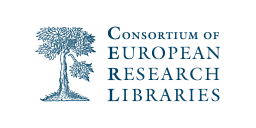by Sara Moens, collections expert at Flanders Heritage Libraries (Antwerp, Belgium)
Assessing the significance of cultural-heritage collections is gaining importance as an essential stepping stone in collection management. By uncovering the significance of a collection for different groups in society ― such as researchers, heritage professionals, teachers, the interested public, policymakers etc. ― collection curators can make well-founded decisions about collection development: what topics to invest in, what to digitise first, what to show in an exhibition etc. However, the existing models for assessing significance were developed for museum objects and are not particularly suited to the needs of heritage collections in libraries. So how would you assess the significance of library heritage collections?
1. Towards a model for special library collections
Based on the existing museum models, Flanders Heritage Libraries developed a methodology for assessing the significance of special library collections. This model defines eleven areas of significance, some of which can be determined fairly objectively (e.g. rarity, material state, provenance, accessibility), whereas others require an intersubjective approach, with the participation of stakeholders (e.g., historical value, research value, exhibition value, social value). These areas of significance are deliberately kept broad, as the methodology has to be applicable to all kinds of special library collections, ranging from manuscripts and early printed books to historical newspapers and modern editions. Essentially, they form a list from which to choose those criteria that are relevant for a given collection. The selected assessment areas will also need further refinement. Completeness, for instance, means something different for long-running series such as periodicals than for early printed books.
2. A cross-collection assessment of early printed books
In 2020, five memory institutions located in the Flanders region of Belgium, i.e. Hendrik Conscience Heritage Library, Ghent University Library, KU Leuven Libraries, the Bruges Public Library and the Museum Plantin-Moretus, took on the challenge to test the model developed by Flanders Heritage Libraries on their collections of early modern mathematical printed books. This type of assessment is called cross-collection assessment, as the collection under review is actually composed of the collections of several organisations.
The choice of mathematical books was inspired by the 400th anniversary of the death of Simon Stevin in 2020. By assessing the significance of their joint collection of early modern mathematical books, the participating libraries aimed to better understand the world in which this renowned mathematician from Bruges lived and wrote.
The first challenge was to delineate the items to assess. With the help of scholars, the collection curators assembled a composite collection of about two hundred and fifty works from their individual collections, printed between 1570 and 1620, the period in which Simon Stevin was professionally active. These include both works of famous mathematicians, often quite theoretical, as well as examples of applied mathematics, such as the numerous, sometimes anonymous handbooks that played an essential role in the development of commerce and technology in the early modern period.
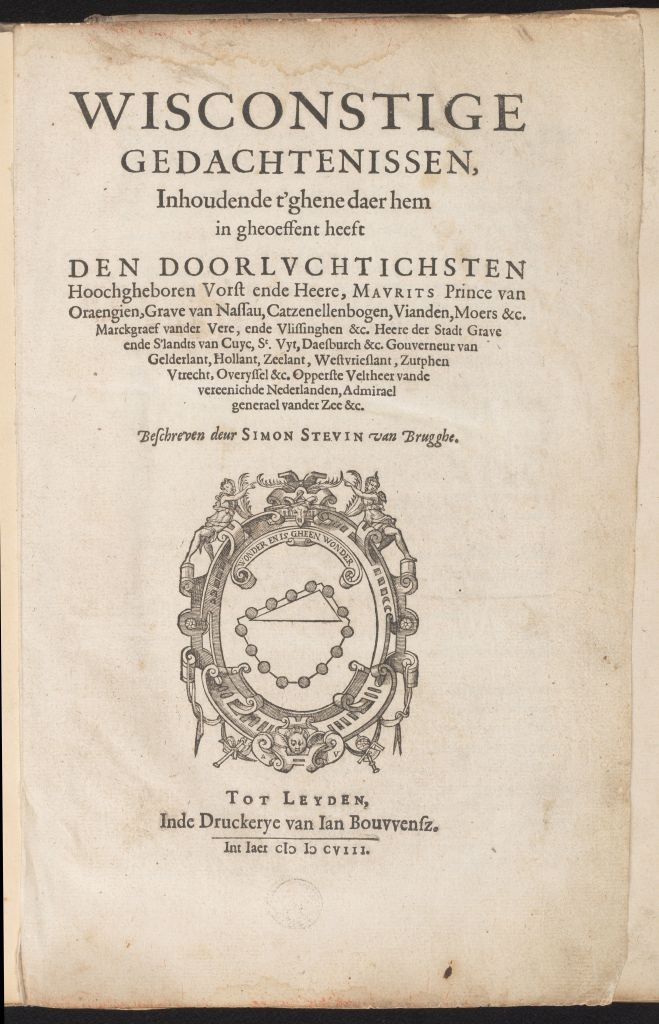
Next, they decided which areas of significance were most relevant, and tailored the assessment methodology to fit the needs of these early modern mathematical books. For example, their material state was assessed using an existing model for damage registration developed by KU Leuven Libraries. The rarity of the books was determined using databases such as USTC, Unicat and Worldcat. Particularly tricky was completeness. Fortunately, we could benefit from Klaas Hoogendoorn’s Bibliography of the Exact Sciences in the Low Countries from ca. 1470 to the Golden Age (1700) (Leiden, 2018), which provides a detailed overview of early modern scientists from the Low Countries and their works, with all known copies of each edition, including translations.
3. And action!
Next, the curators devoted several work sessions to a review of the composite collection’s significance. During these sessions, each area of significance was assessed by the curators and the colleagues in their institution. The results were registered in a template provided by Flanders Heritage Libraries.
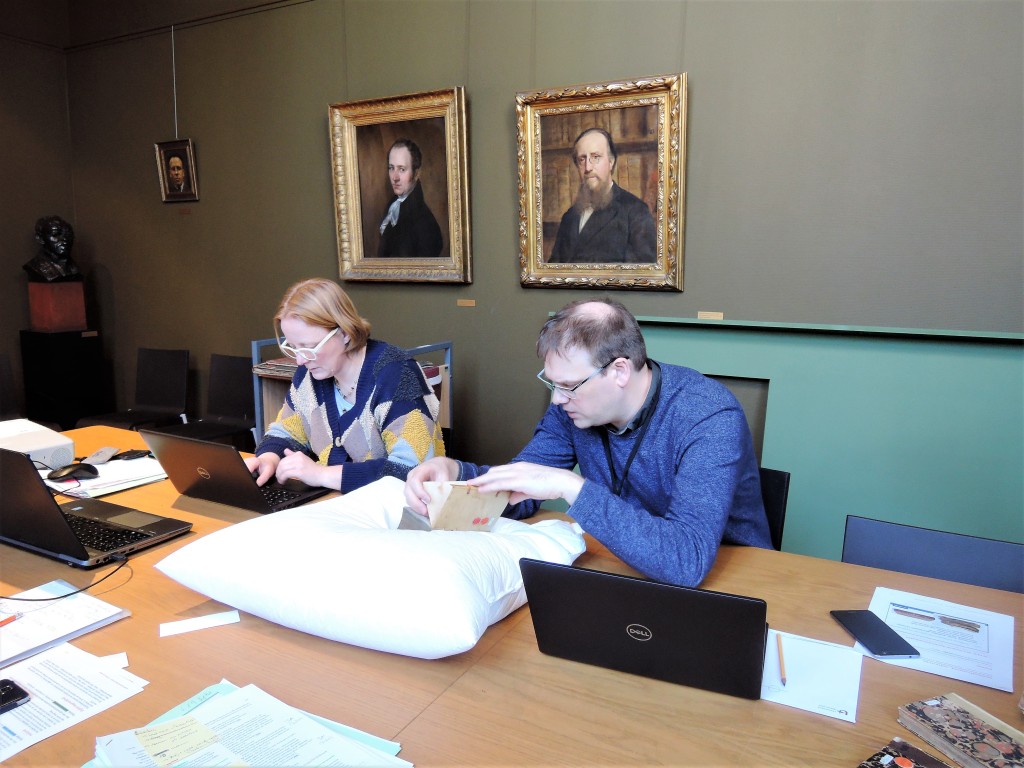
Everyone had high expectations of the work session with academics, teachers and students of different disciplines such as astronomy, mathematics, geography and physics, exhibition curators at scientific museums, publishers of science textbooks and science journalists. Unfortunately, the 2020 Covid-restrictions made it impossible to organise this session. These different perspectives would certainly have added much value, in particular for assessing the collection’s social, historical, research and educational value. Nevertheless, even without stakeholder participation, the assessment proved very rewarding, as it brought to light a beautiful and diverse collection.

4. Long live mathematics
During the early modern period, the academic disciplines were not yet strictly differentiated. The homo universalis dealt with all kinds of challenges, from mathematics and physics to astronomy, economics and architecture. This diversity is clearly present in the collections.
The many beautiful diagrams and drawings further enhance its attractiveness. Particularly stunning are the illustrations in Hans Vredeman De Vries’s study on perspective. Like an early modern Escher, Vredeman (1527-1609) made almost illusionistic architectural drawings, full of lines, spaces, stairs and passages. In contrast to Escher, however, Vredeman did not pursue a surrealistic, but rather a hyperrealistic rendering of spaces.
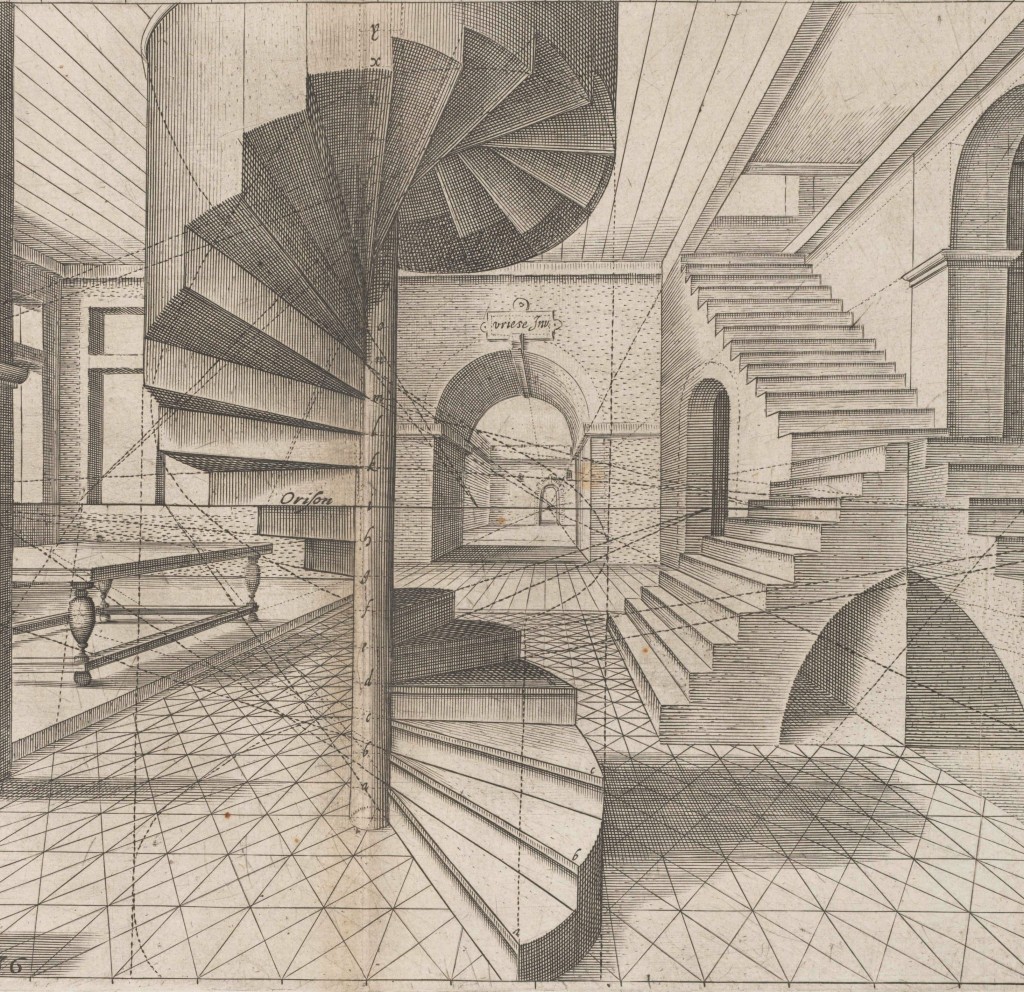
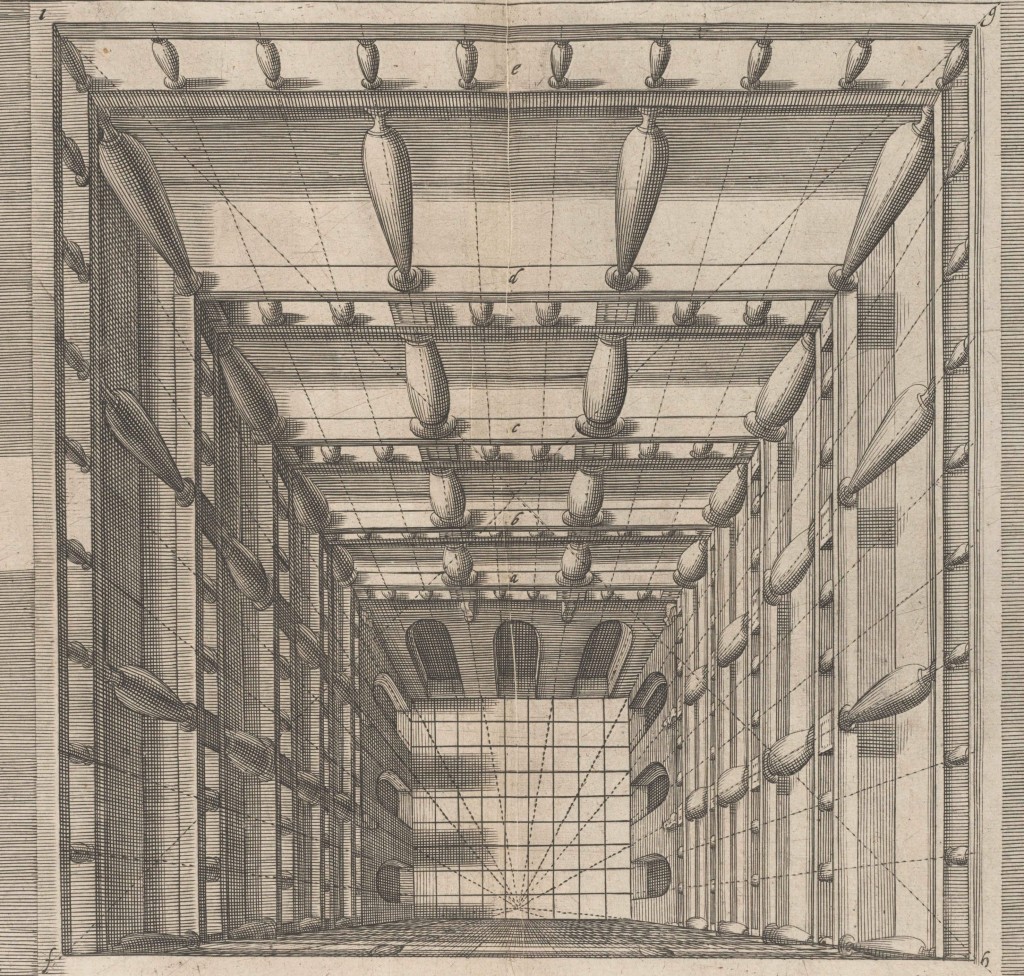
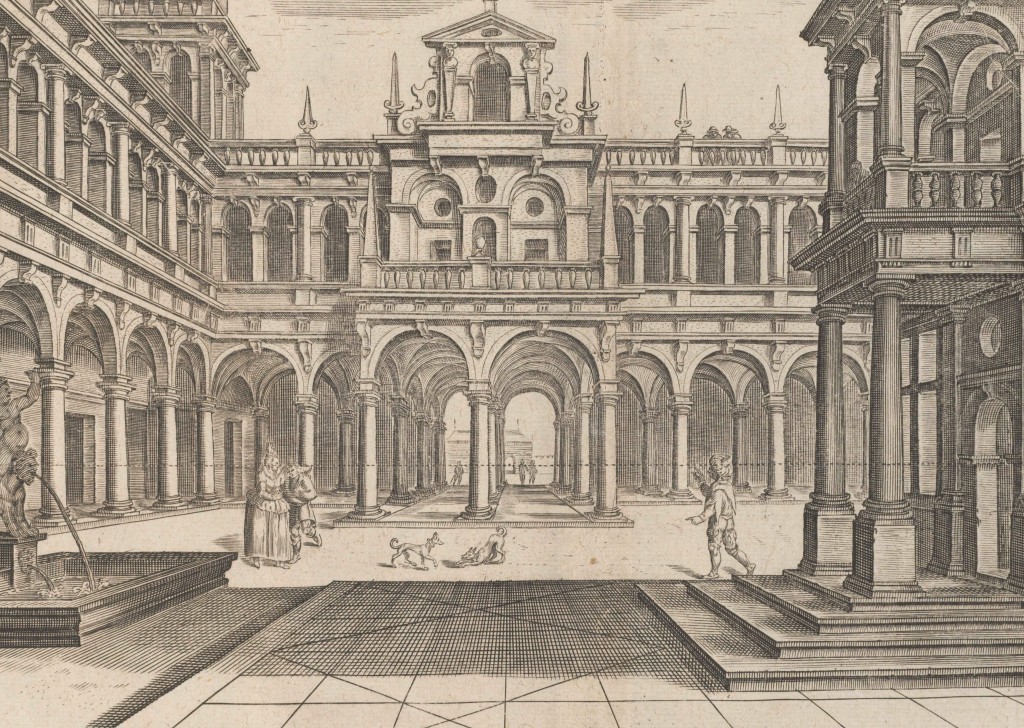
Architectural drawings from Hans Vredeman de Vries, La très noble perspective, à scavoir la theorie, practique et instruction fondamentale d’icelle (Amsterdam, 1619) – Ghent University Library (BIB.ACC.028921)
Equally impressive are the volvelles. By turning these movable parts into the correct position, one can use these paper instruments to make calculations, for example of the height of the sun at a given location or of the length of daylight on a certain day.
Museum Plantin-Moretus (A 2649)
The composite collection also testifies to the rise of experimental science. The experiments that Francis Aguilonius (1567-1617) designed to study vision and the behaviour of light are documented in his Opticorum libri sex. None other than Peter Paul Rubens illustrated the title page and the start of each chapter. For example, the etch accompanying chapter four ‘On misleading appearances’ shows a man looking at an object, first using only his left eye, then only his right. The location of the object appears to be different in each case.

A unique finding was the late sixteenth-century Arabic translation of the Elementa, entitled كتاب تحرير الأصول لأقليدس. (Kitab Tahrir usul li-Uqlidis), by the thirteenth-century Persian scholar Nasir al-Din al-Tusi. The Elementa laid the foundations of geometry and was written by Euclid of Alexandria in the third century BC. It is without doubt the most successful textbook in the history of mathematics.
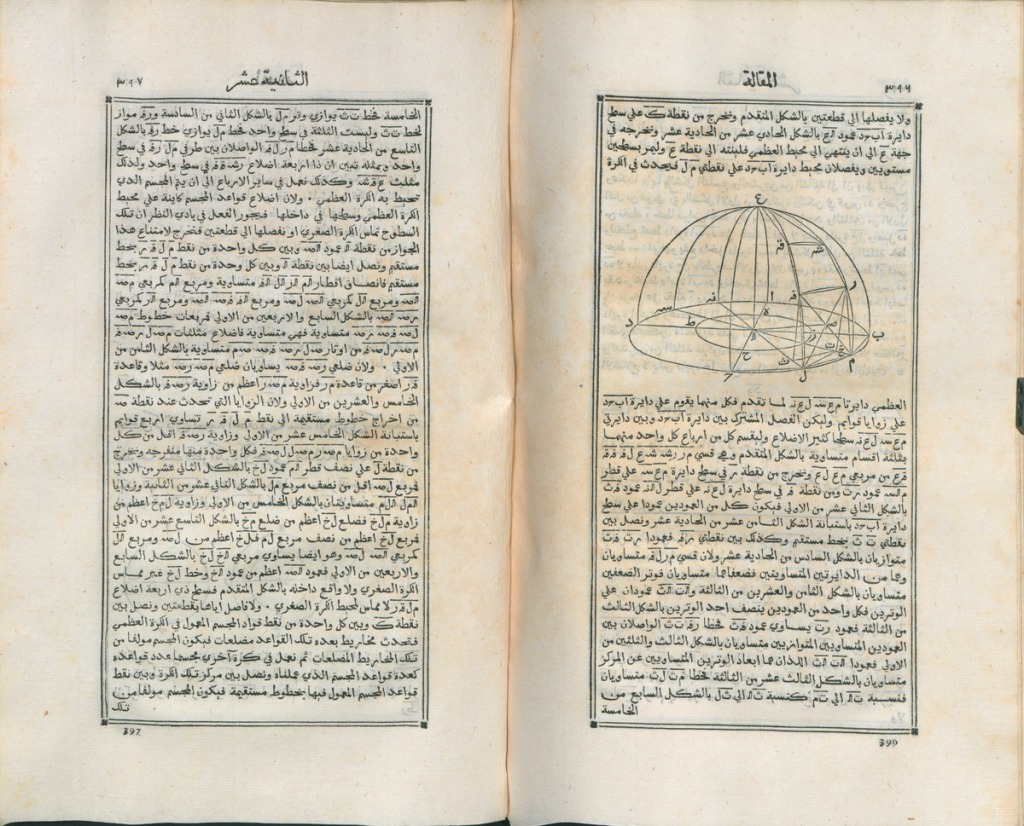
The printing industry stimulated the widespread dissemination of knowledge and thus sparked international intellectual debate, which was not always amicable. The Cyclometrica elementa duo by Joseph Justus Scaliger (1540-1609) stirred just such a controversy. Scaliger claimed to have found the solution to the age-old geometric problem of squaring a circle. His contemporaries, however, were shocked by his brash refutation of Archimedes’ approximation of 𝜋 and severely criticised the work.

While academics zealously debated over the exact value of 𝜋, practical calculating books came on the market for merchants who needed to apply interest rates, convert foreign currencies, and determine the location of their ship using nautical instruments, such as an astrolabium. Land surveyors relied on tables with the cosine, sine and tangent of all possible angles to carry out their work. Tax collectors required practical instruction manuals to help them calculate the volume of a barrel, so they could levy taxes on its contents.
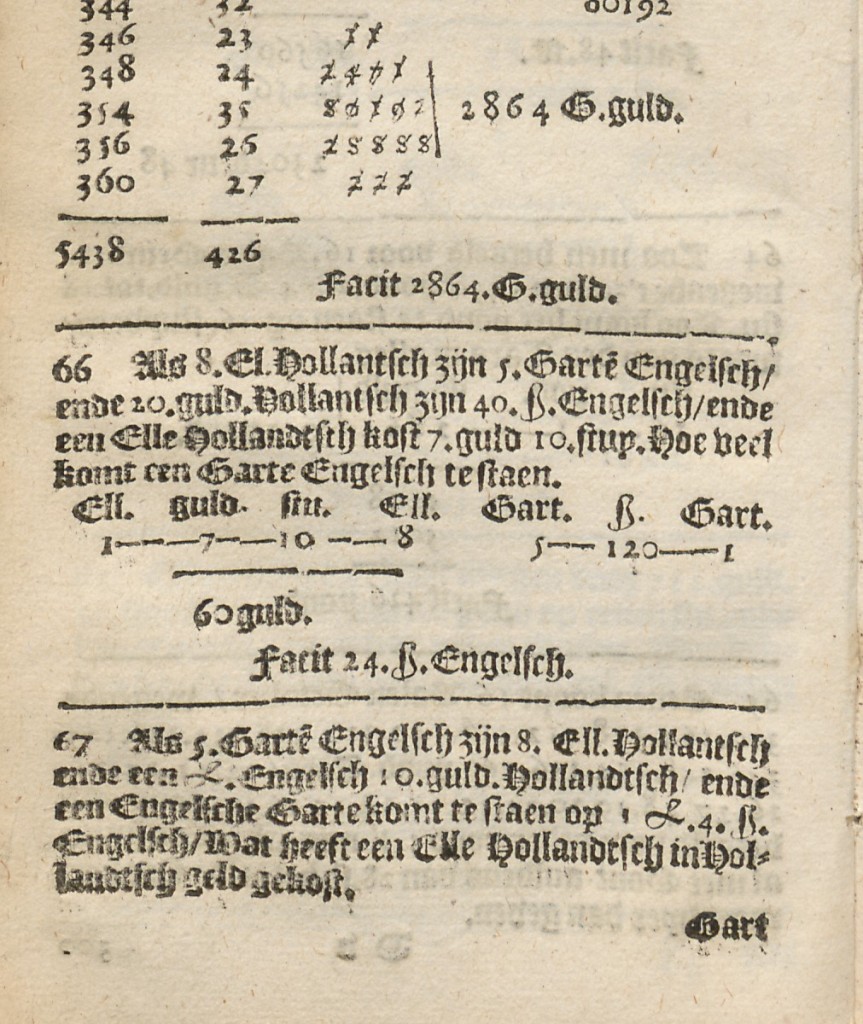
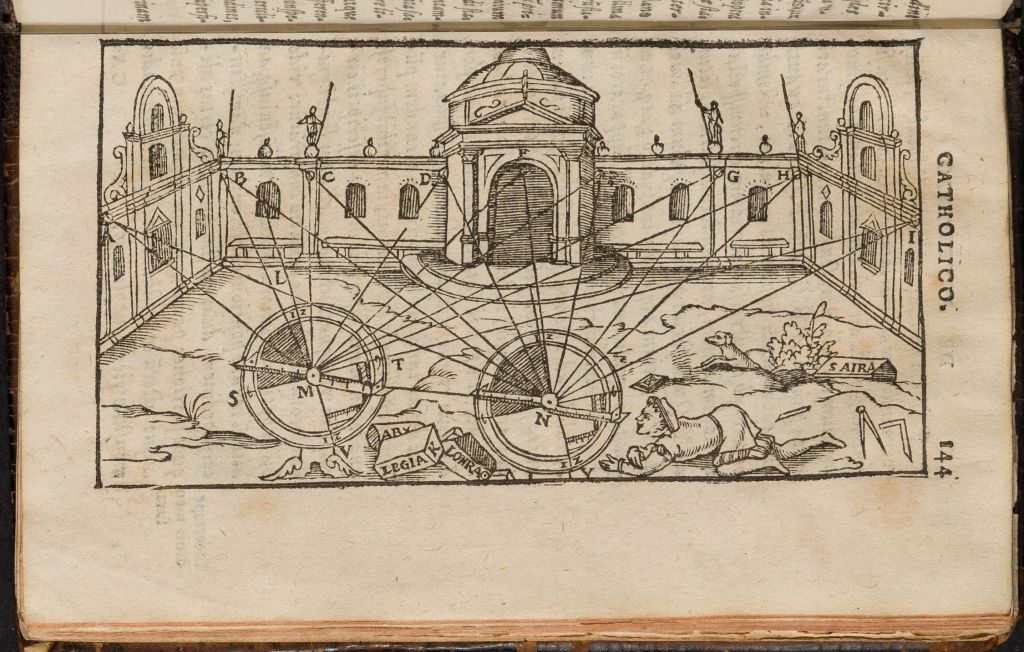
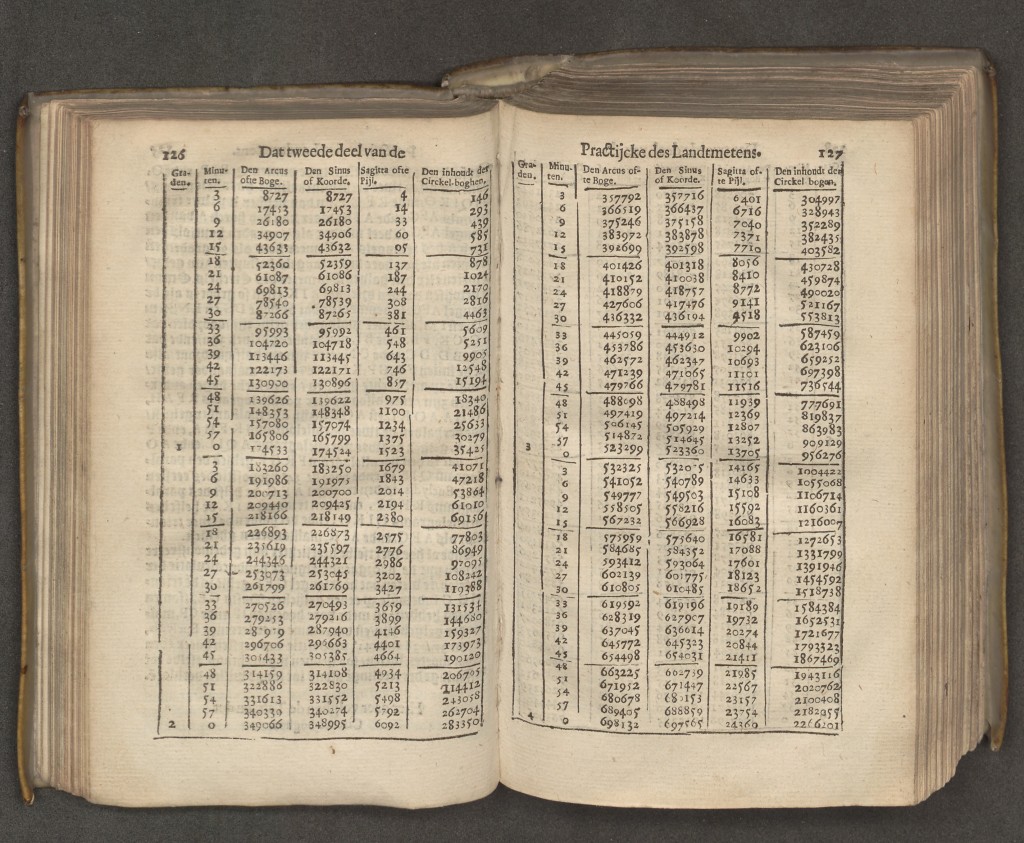
From left to right: A mathematical problem with different measures of lengths and currencies from Jacob Vander Schuere, Arithmetica, oft: Reken-konst: verciert met veel schoone exempelen, zeer nut voor alle vlijtige oeffenaers… (Haarlem, 1611) – Hendrik Conscience Heritage Library (G 68673) / How to operate an astrolabium as illustrated in Gemma Frisius, De astrolabo catholico (Antwerp, 1556) – KU Leuven Libraries Special Collections (CaaA3) / Table with cosine, sine and tangent from Jan Pietersz Dou & Johan Sems, Pracktijcke des Landmetens (Amsterdam, c 1600) – Hendrik Conscience Heritage Library (G 74086:ex.1)
Impressed by this diversity, the curators decided to devote a web expo to these beautiful books. Vive l’arithmétique! (https://vivelarithmetique.be/en) tells the story of six early printed books from the time of Simon Stevin. Its title is derived from a beautiful image in the work of arithmetic teacher Martin vanden Dijcke (c 1546 – after 1600), representing different forms of applied mathematics, from accountancy to levying taxes on wine.
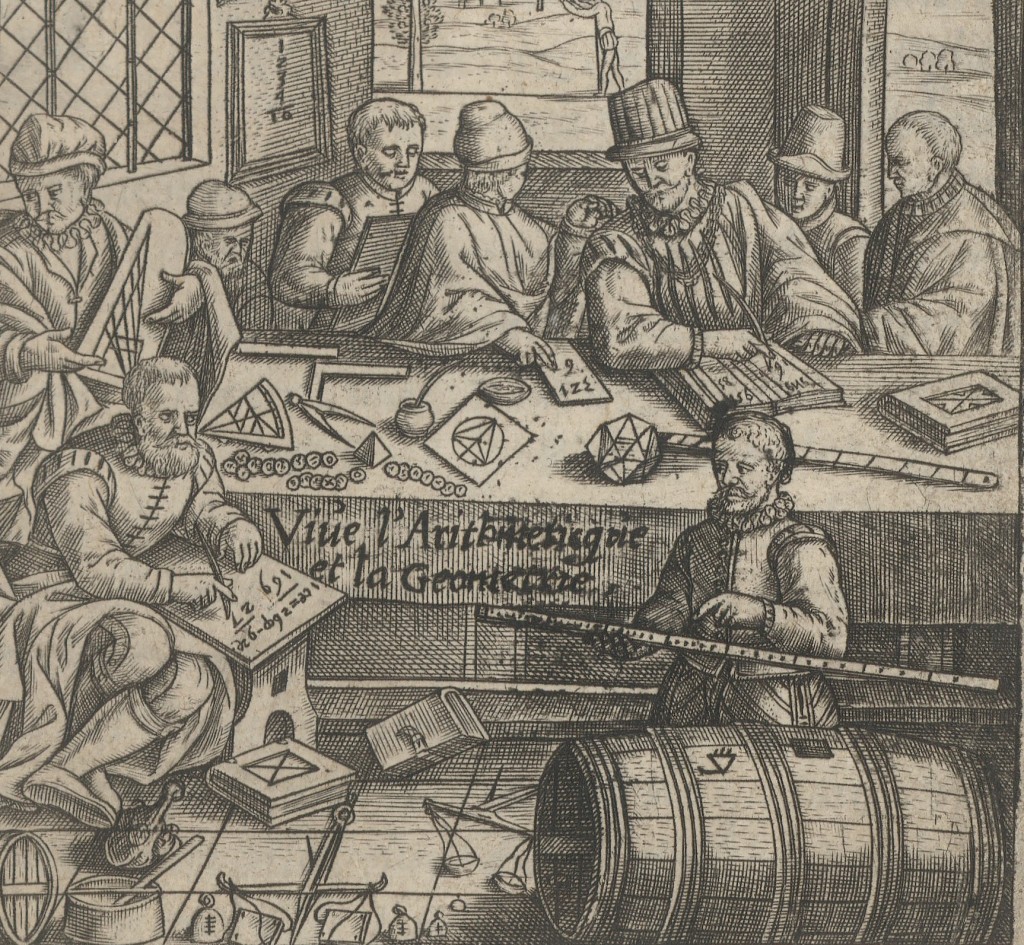
Another outcome of the project is the extensive report (in Dutch), in which the significance of the composite collection for each of the selected areas is discussed. It also provides suggestions for future collection management.
5. Insights for collection management
First of all, the collections of early modern mathematical books in the participating libraries clearly have historical value, as they illustrate the heterogeneity of early modern mathematics. The composite collection, therefore, is an interesting source of information for a variety of users, such as students and researchers from different academic disciplines. Many works are already available for online consultation, facilitating the use of these sources. Due to its age and aesthetic qualities, the collection is also attractive to the general public. In general, it is currently in good condition, even though about20% suffers from damage to the binding. Digitisation and display in exhibitions is therefore possible in most cases.
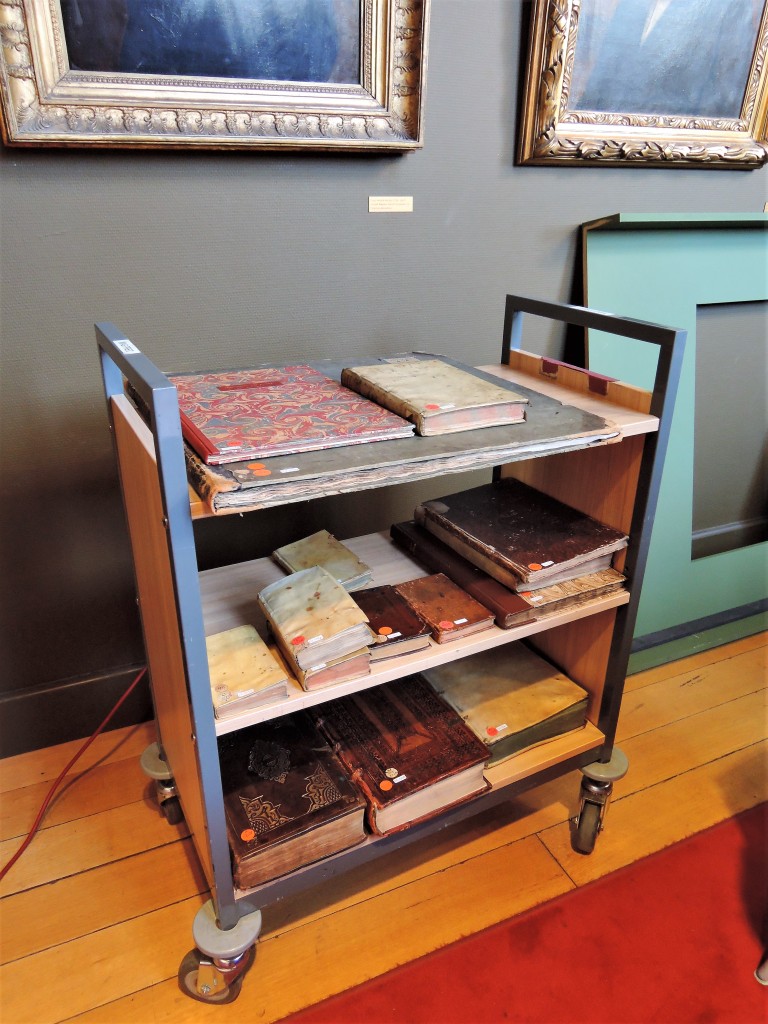
However, what struck the curators the most was the way their collections complemented each other. While the perception is often that libraries collect and preserve many of the same publications, this cross-collection assessment of early modern mathematical books revealed only limited overlap, demonstrating that the special collections of these libraries are not interchangeable, but in fact are mutually reinforcing.
The project also uncovered potential for the future development of their joint collection of early modern mathematical books. For example, based on the above-mentioned bibliography by Hoogendoorn, eighteen works published between 1570 and 1620 appear to be unavailable in Belgium. The list includes a number of works by Willibrord Snellius and Ludolphus a Ceulen, several by Nicolaus Petri (among which Arithmetica. Practique omme int corte te leeren cijpheren naer allerleye coophandelinghe (Amsterdam, 1590)), a work by the Louvain magister Gemma Frisius (Scholia succinta et facilia (Wittenberg, 1611)) and Martin Vanden Dijcke’s Livret de comptes (s.l., 1583). The cultural-heritage and research community in Belgium would certainly benefit from the acquisition of these works.
By contrast, four books in the composite collection turned out to be the only known surviving copy:
- Tycho Brahe (?), Van die vvonderlijcke nieuwe sterre openbarende in de hemel, die noyt voor desen tijt ghesien is gheweest (Antwerp: Hendrick vander Loe, 1572) – Ghent University Library (BIB.MA.000960/-A)
- Martin Vanden Dijcke, Soo behoort men te doen. Den reghel van gewin ende verlies vander waere (s.l.: s.n., 1591) – Museum Plantin-Moretus (R 37-4:22)
- Anthoni Smyters, L’arithmetique d’Antoine Smyters, Anversien. Laquelle contient les computations de plusieurs questions, necessaires à tous … amateurs de ceste science (Rotterdam: Jan Waesberge, 1600) – KU Leuven Libraries Special Collections (7A270)
- Willem Bartjens, De cyfferinghe … inhoudende … de grond-regulen der cypher-konst (Amsterdam: Cornelis Claesz., 1604) – Hendrik Conscience Heritage Library (G 10429)
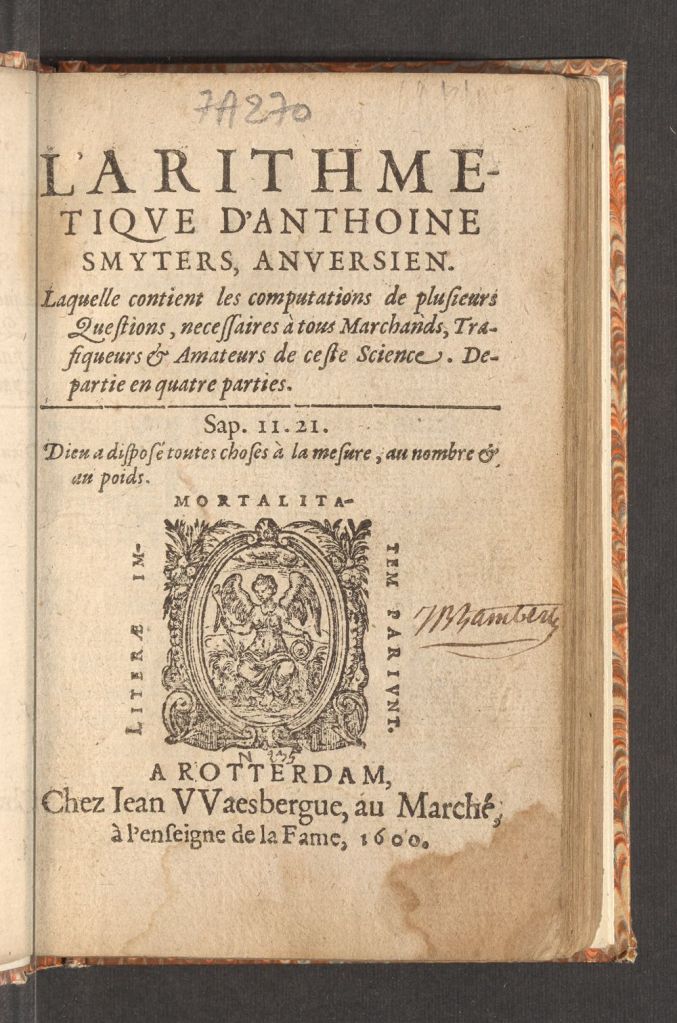
To make them more accessible and to aid preservation of their content, these works deserve priority for digitisation.
Furthermore, risks for early modern printed mathematical books were identified. None of the five libraries involved actively collects these kinds of publications, although occasionally, they do acquire them because of their relevance to other areas of interest, e.g. university history (KU Leuven Libraries). This is particularly unfortunate for the works of local mathematicians, whose oeuvre is less likely to be collected outside Flanders. Furthermore, almost two-thirds of the composite collection is written in Latin. As knowledge of this language is steadily declining, the use of early modern mathematical books may also decline, even though the collection’s significance remains unchanged.
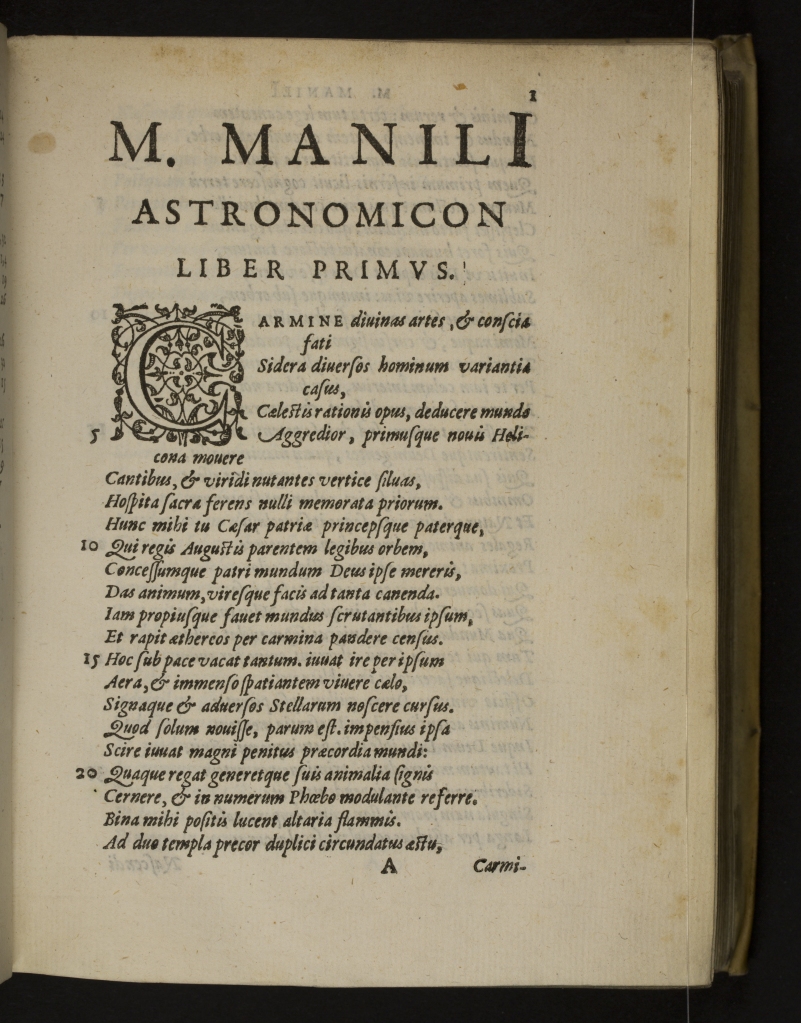
6. A worthwhile endeavour
Although assessing the significance of a library collection is labour-intensive, the resulting insights into the collection, its significance and its potential help curators to better substantiate their collection development policy. A cross-collection assessment with different organisations is even more rewarding, for it enables the organisations to look beyond their own collection and assess its significance in a broader perspective.
Moreover, the project not only proved fruitful for the participating libraries, but also for Flanders Heritage Libraries, as it allowed the assessment methodology to be fine-tuned. For instance, it became clear that when assessing early modern books, significance manifests itself at different levels: the copy, the edition, the title, and the collection. Some elements, like the bindings or annotations, are assessed at the level of the copy. But the aesthetic value of its engravings will apply to all copies of an edition. The historical significance of the text extends to all editions from a given period. And finally, an item may derive significance from the provenance of the collection it belongs to. The purpose of the assessment will determine which levels should be emphasised.
But perhaps the most compelling argument for assessing a collection is that it provides an excellent opportunity to (re)discover a collection. As one of the participating curators put it:
“As curators, we are surrounded by so much beauty, but our daily tasks keep us so busy we often fail to realise what an unbelievable privilege it is to work with these gems.”
7. Some reading suggestions
The methodology for assessing significance of special library collections is available on https://wijzerwaarderen.be (in Dutch). Alternatively, we may be contacted at collecties@vlaamse-erfgoedbibliotheken.be for more information.
Jozef Devreese and Guido Vanden Berghe, Wonder en is gheen wonder : de geniale wereld van Simon Stevin 1548-1620 (Louvain: Davidsfonds, 2003)
Christopher Heuer, The City Rehearsed. Object, architecture, and print in the worlds of Hans Vredeman De Vries (New York: Routledge, 2009)
Jan Hogendijk, ‘The Scholar and the Fencing Master: The exchanges between Joseph Justus Scaliger and Ludolph van Ceulen on the circle quadrature (1594-1596)’ in Historia Mathematica 37 (2010), pp. 345-75
Klaas Hoogendoorn, Bibliography of the exact sciences in the Low Countries from ca. 1470 to the Golden Age (1700) (Leiden: Brill, 2018)
Marjolein Kool, Die conste vanden getale. Een studie over Nederlandstalige rekenboeken uit de vijftiende en zestiende eeuw, met een glossarium van rekenkundige termen (Verloren: Hilversum, 1999)
Ad Meskens, Practical mathematics in a commercial metropolis. Mathematical life in late 16th century Antwerp (Dordrecht: Springer, 2013)
Jeff Suzuki, Mathematics in Historical Context (The Mathematical Association of America, 2009)
August Ziggelaar, ‘Pieter Paul Rubens en François de Aguilón’ in Piet Lombaerde, Innovation and Experience in Early Baroque in the Southern Netherlands. The Case of the Jesuit Church in Antwerp (Turnhout: Brepols, 2008), pp. 31-40
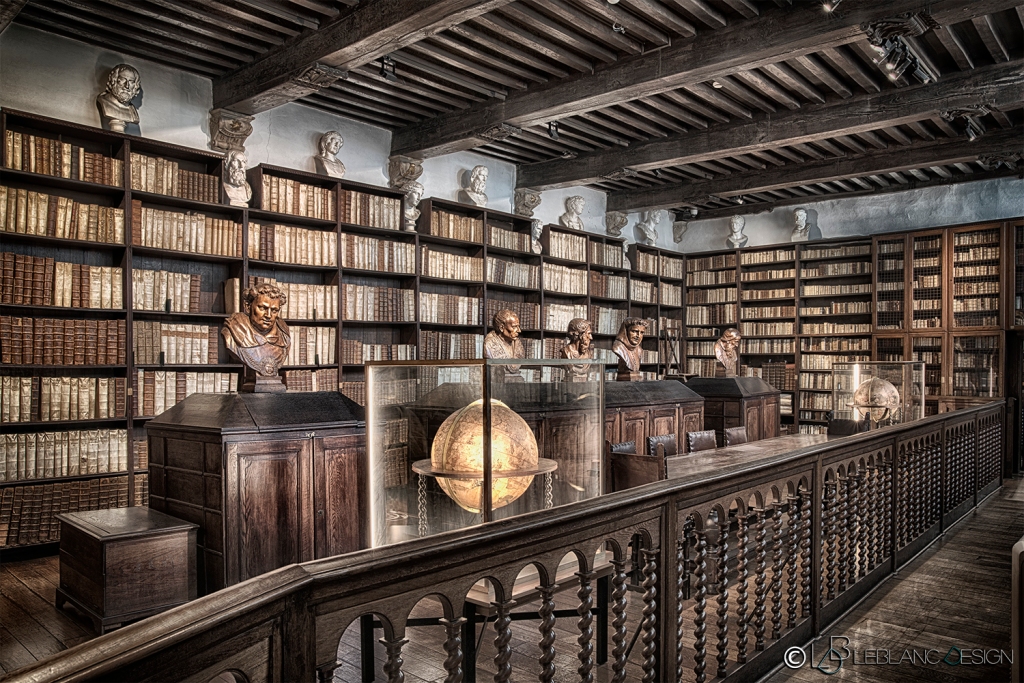
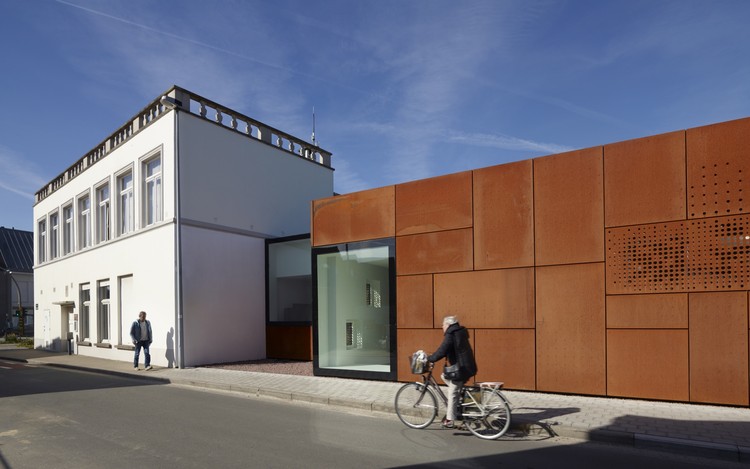


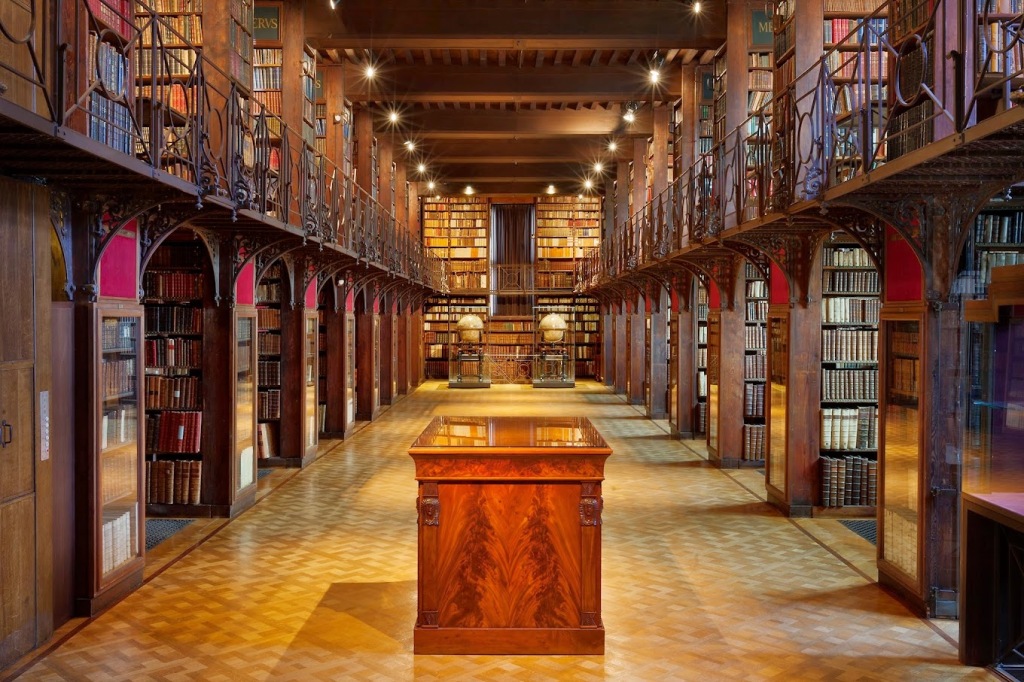
From left to right: Museum Plantin-Moretus, the Bruges Public Library, KU Leuven Libraries,
Ghent University Library and the Hendrik Conscience Heritage Library
